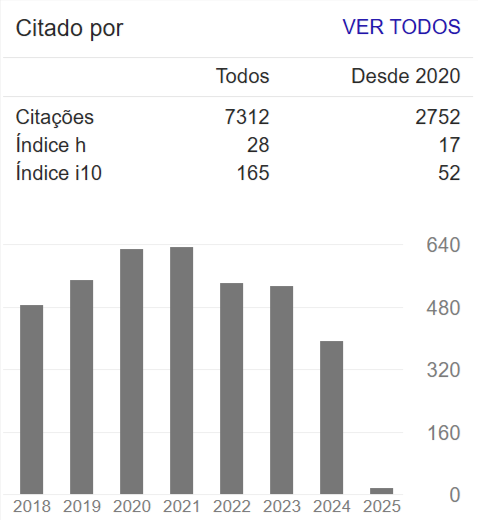Hydrogeological Characterization of the Groundwater Aquifer of Unit 3 of Univiçosa
Abstract
In view of the advancement of groundwater simulations in recent years as a way of proposing solutions for the management of water resources, the present research aimed to develop a conceptual hydrogeological model for the phreatic aquifer of Unit 3 of Univiçosa, in which the lowering of the water table water level through the pumping data of the wells existing at the site and obtaining the hydrodynamic parameters of the aquifer through the Aquifer Test software. Potentiometric analyzes of wells were also performed, as well as the relationship between precipitation and aquifer recharge through campaigns to monitor the static and dynamic water levels of the wells and the region's precipitation regime to understand the behavior of the sheet. water table in the region. It was found that there were different responses to the pumping for the wells called “Frente Esquerda” and “Fundos Direita”, the latter due to a small lake in its proximity. During recovery, both wells behaved in a similar manner in that the water levels reached values above those measured before the pumping tests, but with the well “Fundo Direita” reaching values much higher, around 1.75 m more than than the level measured before the pumping test. The values of the hydrodynamic parameters found were: Transmissivity (T) 1.0 x 10-3 m2 / s, Hydraulic Conductivity (K) 4.17 x 10-5 m / s and Storage (S) 1, 0 x 10-4. These values allowed obtaining the Radius of influence of the wells, making it possible to verify the non-overlapping of the lowering cones between the two wells. The potentiometric analysis allowed to verify the behavior of the water flow between the wells, including a third one called “Residential”, being verified that in a stationary regime the water flows from the highest to the lowest altimetric wells and in a transient regime, when there is pumping , it flows towards the wells. The analysis of the relationship between precipitation and aquifer recharge was not significant, showing small variations in the static water levels of wells in rainy periods, which suggests that the amount of water precipitated in the monitoring period was not sufficient to cause changes in water table water levels. Finally, it was found that the exploitation of water from the wells does not compromise the amount of water in the site, since there is no interference between them, however it is recommended to carry out surveys in the vicinity of the wells to better characterize them and extend the period. monitoring to better understand the behavior of the local groundwater aquifer through the development of a mathematical hydrogeological model

















